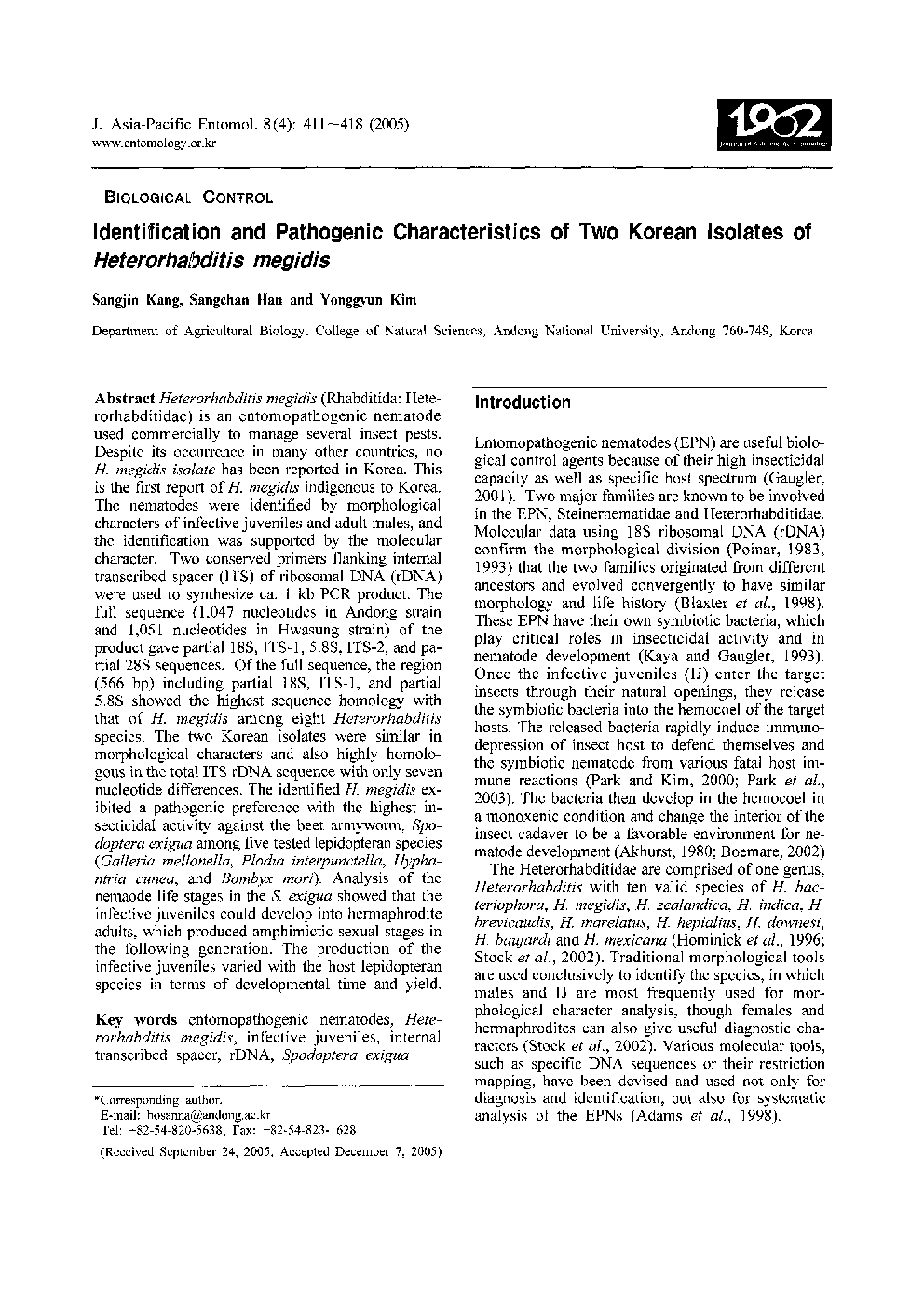| Article ID | Journal | Published Year | Pages | File Type |
|---|---|---|---|---|
| 9476672 | Journal of Asia-Pacific Entomology | 2005 | 8 Pages |
Abstract
Heterorhabditis megidis (Rhabditida: Hete-rorhabditidae) is an entomopathogenic nematode used commercially to manage several insect pests. Despite its occurrence in many other countries, no H. megidis isolate has been reported in Korea. This is the first report of H. megidis indigenous to Korea. The nematodes were identified by morphological characters of infective juveniles and adult males, and the identification was supported by the molecular character. Two conserved primers flanking internal transcribed spacer (ITS) of ribosomal DNA (rDNA) were used to synthesize ca. 1 kb PCR product. The full sequence (1, 047 nucleotides in Andong strain and 1, 051 nucleotides in Hwasung strain) of the product gave partial 18S, ITS-1, 5.8S, ITS-2, and partial 28S sequences. Of the full sequence, the region (566 bp) including partial 18S, ITS-1, and partial 5.8S showed the highest sequence homology with that of H. megidis among eight Heterorhabditis species. The two Korean isolates were similar in morphological characters and also highly homologous in the total ITS rDNA sequence with only seven nucleotide differences. The identified H. megidis ex-ibited a pathogenic preference with the highest in-secticidal activity against the beet armyworm, Spo-doptera exigua among five tested lepidopteran species (Galleria mellonella, Plodia interpunctella, Hypha-ntria cunea, and Bombyx mori). Analysis of the nemaode life stages in the S. exigua showed that the infective juveniles could develop into hermaphrodite adults, which produced amphimictic sexual stages in the following generation. The production of the infective juveniles varied with the host lepidopteran species in terms of developmental time and yield.
Keywords
Related Topics
Life Sciences
Agricultural and Biological Sciences
Animal Science and Zoology
Authors
Sangjin Kang, Sangchan Han, Yonggyun Kim,
